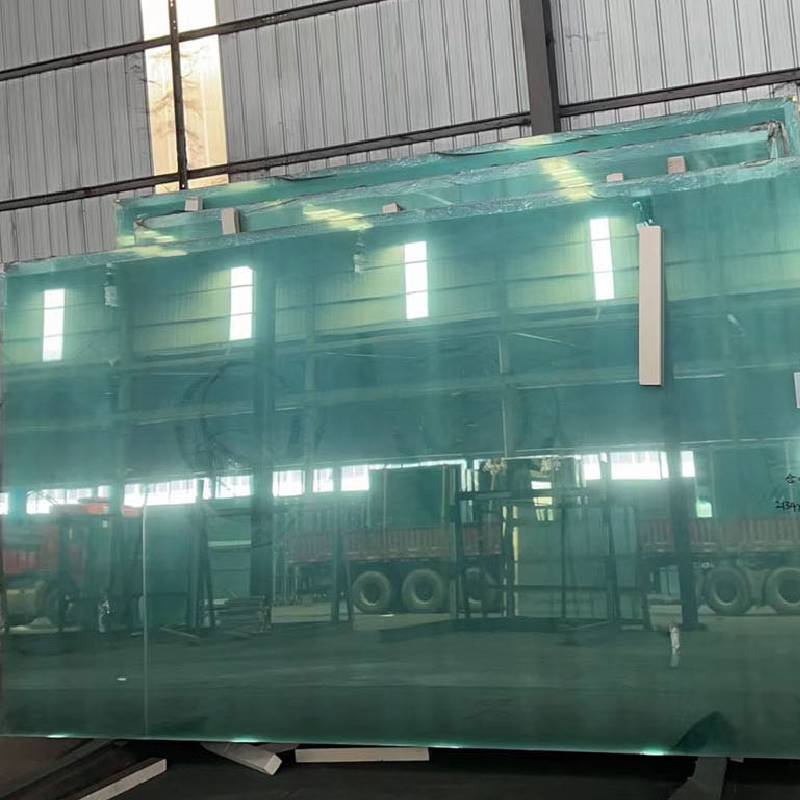Understanding the Types of Annealed Glass A Comprehensive Overview
Annealed glass, also known as float glass, is a fundamental material in architectural and decorative applications due to its versatility, clarity, and strength. It undergoes a controlled cooling process called annealing, which imparts uniformity and stability, reducing internal stresses that could cause breakage. This article delves into the various types of annealed glass, highlighting their properties, uses, and advantages.
1. Clear Annealed Glass
The most common type, clear annealed glass, is a transparent, non-tempered glass with a smooth surface. It allows maximum light transmission and visibility, making it ideal for windows, doors, and skylights. Its thermal stability makes it suitable for areas with varying temperatures, but its lack of safety features requires additional safety measures in high-risk locations.
2. Tinted Annealed Glass
Tinted annealed glass imparts a color to the glass, typically green, blue, gray, or bronze, to reduce heat gain and glare. It's commonly used in sunny climates or where solar control is necessary. The tinting also adds aesthetic appeal and privacy to buildings without compromising light transmission significantly.
3. Laminated Annealed Glass
Laminated annealed glass is made by bonding two or more layers of annealed glass with a polyvinyl butyral (PVB) interlayer. This type offers enhanced safety as it holds together when shattered, preventing injury and ingress of debris. It's often used in automotive windscreens, glass floors, and areas requiring acoustic insulation.
4
4

4
4
 types of annealed glass
types of annealed glass. Frosted/Textured Annealed Glass
Frosted or textured annealed glass provides visual privacy while still allowing light to pass through. It is created by acid-etching or sandblasting the surface of clear glass, resulting in a matte finish. This type is popular in bathrooms, conference rooms, and other private spaces where transparency is not desired.
5. Patterned Annealed Glass
Patterned or obscure glass has an embossed design on one or both sides, offering varying degrees of opacity. These patterns can range from subtle to bold, providing aesthetic appeal along with privacy. They are commonly used in decorative applications, shower doors, and partitions.
6. Reflective Annealed Glass
Reflective annealed glass, also known as mirrored glass, has a thin metallic coating that reflects light, reducing heat gain and enhancing energy efficiency. It's widely used in building facades, interior partitions, and furniture for its modern, sleek appearance.
In conclusion, the different types of annealed glass cater to diverse requirements, balancing aesthetics, functionality, and safety. Each type has its unique characteristics and benefits, making them adaptable to various architectural and design contexts. However, it's essential to consider local building codes, environmental factors, and user needs when selecting the appropriate type of annealed glass.
 Afrikaans
Afrikaans  Albanian
Albanian  Amharic
Amharic  Arabic
Arabic  Armenian
Armenian  Azerbaijani
Azerbaijani  Basque
Basque  Belarusian
Belarusian  Bengali
Bengali  Bosnian
Bosnian  Bulgarian
Bulgarian  Catalan
Catalan  Cebuano
Cebuano  Corsican
Corsican  Croatian
Croatian  Czech
Czech  Danish
Danish  Dutch
Dutch  English
English  Esperanto
Esperanto  Estonian
Estonian  Finnish
Finnish  French
French  Frisian
Frisian  Galician
Galician  Georgian
Georgian  German
German  Greek
Greek  Gujarati
Gujarati  Haitian Creole
Haitian Creole  hausa
hausa  hawaiian
hawaiian  Hebrew
Hebrew  Hindi
Hindi  Miao
Miao  Hungarian
Hungarian  Icelandic
Icelandic  igbo
igbo  Indonesian
Indonesian  irish
irish  Italian
Italian  Japanese
Japanese  Javanese
Javanese  Kannada
Kannada  kazakh
kazakh  Khmer
Khmer  Rwandese
Rwandese  Korean
Korean  Kurdish
Kurdish  Kyrgyz
Kyrgyz  Lao
Lao  Latin
Latin  Latvian
Latvian  Lithuanian
Lithuanian  Luxembourgish
Luxembourgish  Macedonian
Macedonian  Malgashi
Malgashi  Malay
Malay  Malayalam
Malayalam  Maltese
Maltese  Maori
Maori  Marathi
Marathi  Mongolian
Mongolian  Myanmar
Myanmar  Nepali
Nepali  Norwegian
Norwegian  Norwegian
Norwegian  Occitan
Occitan  Pashto
Pashto  Persian
Persian  Polish
Polish  Portuguese
Portuguese  Punjabi
Punjabi  Romanian
Romanian  Russian
Russian  Samoan
Samoan  Scottish Gaelic
Scottish Gaelic  Serbian
Serbian  Sesotho
Sesotho  Shona
Shona  Sindhi
Sindhi  Sinhala
Sinhala  Slovak
Slovak  Slovenian
Slovenian  Somali
Somali  Spanish
Spanish  Sundanese
Sundanese  Swahili
Swahili  Swedish
Swedish  Tagalog
Tagalog  Tajik
Tajik  Tamil
Tamil  Tatar
Tatar  Telugu
Telugu  Thai
Thai  Turkish
Turkish  Turkmen
Turkmen  Ukrainian
Ukrainian  Urdu
Urdu  Uighur
Uighur  Uzbek
Uzbek  Vietnamese
Vietnamese  Welsh
Welsh  Bantu
Bantu  Yiddish
Yiddish  Yoruba
Yoruba  Zulu
Zulu 

 4
4
4
4